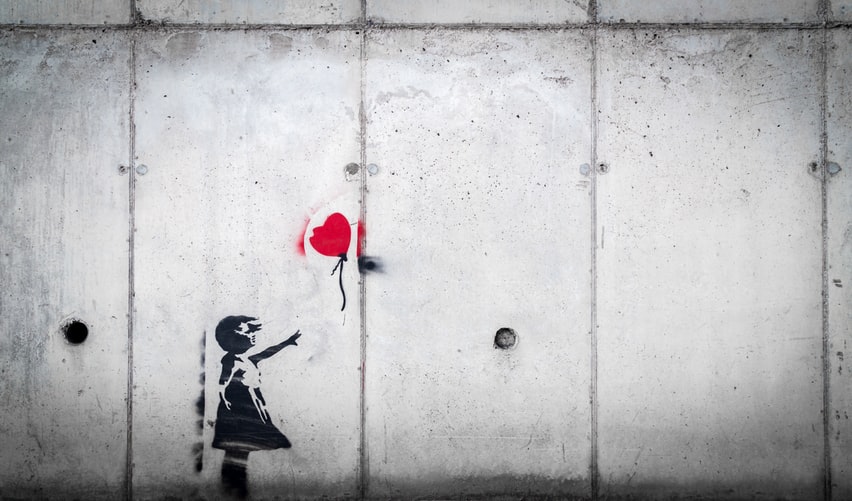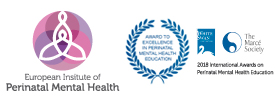
“There are no feet too small to leave prints on this earth.”
The child that dies during the perinatal stage: lifelong impact on the family
Although there has traditionally been silence in our society about children who die at the beginning of life, this silence has been unravelling. Scientific papers and worldly magazines, support groups for perinatal loss, conferences, training for healthcare professionals… these have been multiplying. Parents have turned to the Internet to reach out for warmth and an understanding that they could not find anywhere else.
Midwives, nurses, medical doctors who are sensitive to this topic realize they are often sadly lacking in skills to support grieving parents at the time when their babies die, and they are stepping up to receive training. And that is good. However, that moment, the tragic moment of the loss, of the baby´s death and birth, or birth and death, that transcendental moment which certainly requires specific support, is not everything.
Because after that moment comes another for the family, and then another, and another. And their life continues.
The “state of shock”
When we receive news of enormous emotional impact, our brain goes into overdrive: there is a hiperactivation of the emotional circuits (amygdala), but a subactivation of the cortex. This means that our emotions will be deeply ingrained in our brains, but at the same time it is hard to focus, to understand information and to make decisions. That is why when receiving news like “I´m sorry, there is no fetal heartbeat” or “you will have to birth your dead baby”, the mother and her partner will probably be unable to retain information and often show the immediate desire to disconnect and flee from pain (“I don’t want to see the baby”, “do a cesarean and just get it out…”).
The importance of language.
As professor and family therapist Navarro Góngora says, “picture-frame” messages are those given (in this case by healthcare professionals) in a moment of crisis, that will determine patients´ views or position. If the obstetrician says “don´t look” when a mother is birthing her dead baby, he is giving a very potent message. “Incompatible with life”, “fetus” or other technical terms are not neutral and determine a certain of relating to the baby.
This also goes for non-verbal language. That a mother receives the news of her baby´s intrauterine death while the father is outside gives a message about who the healthcare professional (HCP) thinks is going to be hurt by the news. That HCP avoid the room of a couple whose baby has died, or that they speak to them from the doorway… If a baby that is too premature to survive but is still born alive is placed on a table… these are intensely emotional messages. If, on the other hand, the tiny baby (alive or dead) is treated tenderly by the staff, this gives the parents another emotional frame
Modeling
For many parents that suffer perinatal loss, it is their first close contact with death. And nothing ever prepares you to face the death of your beloved child. That is why HCPs are the role models for them – there is no one else. HCPs might not know it, but if they look scared, parents will be scared too, and emotionally “run away.” But if HCP talk about the baby with tenderness, with affection and respect, call him or her by her name (or ask it), if they validate the parents’ pain, it will be easier for parents to regain their capacity for decision, and to express their pain and their love for their infant.
Forever
The language and modeling of HCP professionals during those harsh moments become forever engraved in parents´ brains. As studies have shown, HCP´s attitudes can add pain and trauma to parents´ grief experience or, on the other hand, can be of immeasurable comfort.
Creating family memories and social validation of loss
For a family to have physical memories of their lost infant, that will become symbolic objects that unite them with their baby, hospital staff have to be ready: baby´s hand or footprints, pictures, blankets… We know that even when none of this is available, parents often find substituting objects: a shirt mother wore during that baby´s pregnancy, a flower someone gave her, a drawing by another sibling…
Another modeling HCP can do in the hospital is ask the parents who else in the family might like to see the baby, or to be in the pictures… this sends the potent message that grief is not something to hide from the family but to share.
Socially this is something that has also been changing. Perinatal Loss Month celebration, or for example the Day of Remembrance in Spain (begun by the perinatal loss support group Uma Manita) create a visible, social space for families of children who have passed away to come together and honor their loved ones publicly.
And afterwards?
Weeks pass and everyone seems to think that the death of an unborn or very young infant is easily forgotten… but it is not. Those who thought it was all right for you to cry during the first weeks look at you funny if you cry two months after the death of your baby.
Now is when support groups are of utmost help. For information, on the length of the grieving period, on the steps to walk through life as the mother or the father of a child that is not physically here but is still a beloved child, on how to emotionally face the next pregnancy…
Pain of loss is universal. Parents who lose a child often feel alone, feel like there is no one else in the world like them, since everyone has nice live babies. Groups bring together people who have suffered the same loss and walk down the same path, creating a safe space where harsh experiences can be expressed in non-judgmental surroundings.
Support groups offer hope, as parents who have just gone through their loss see parents who have lived with it for months or years and are once again laughing and enjoying life and have integrated (not forgotten) their loss.
Family life after the first years
Life goes on, and the relationship with the child who left goes on too. Even though the child is dead, the relationship is – paradoxically – alive.
And, precisely because it is alive, the relationship evolves.
Pain is transformed as time goes by. Sometimes it becomes a family celebration of birthdays, anniversaries… Sometimes it is hidden in the mother´s heart for years (shadow grieving) and is only expressed in safe places or to safe people many, many years after the loss.
I know of no mother who has ever forgotten her child.
Everything changes when one or several children have died: birthdays, new births, holidays, happy moments, sad moments… even intimacy in the couple is different when an infant has lived and died in the woman. There may be a spiritual and religious crisis and transformation.
All this must be taken into account by healthcare professionals, to understand the lifelong changes that take place in the family that goes through perinatal loss, so those changes can be accepted, honored, and supported when need by referring to support groups or to health care professionals.
The infant may be gone, but the bond with the infant lives on.
Pilar Gómez-Ulla Astray
Psychologist and family therapist, Madrid. Cofounder and President of El Hueco de mi Vientre Network. www.redelhuecodemivientre.es.
Photo by Karim MANJRA on Unsplash







